Glass Act: Finding Your Perfect Garden Room
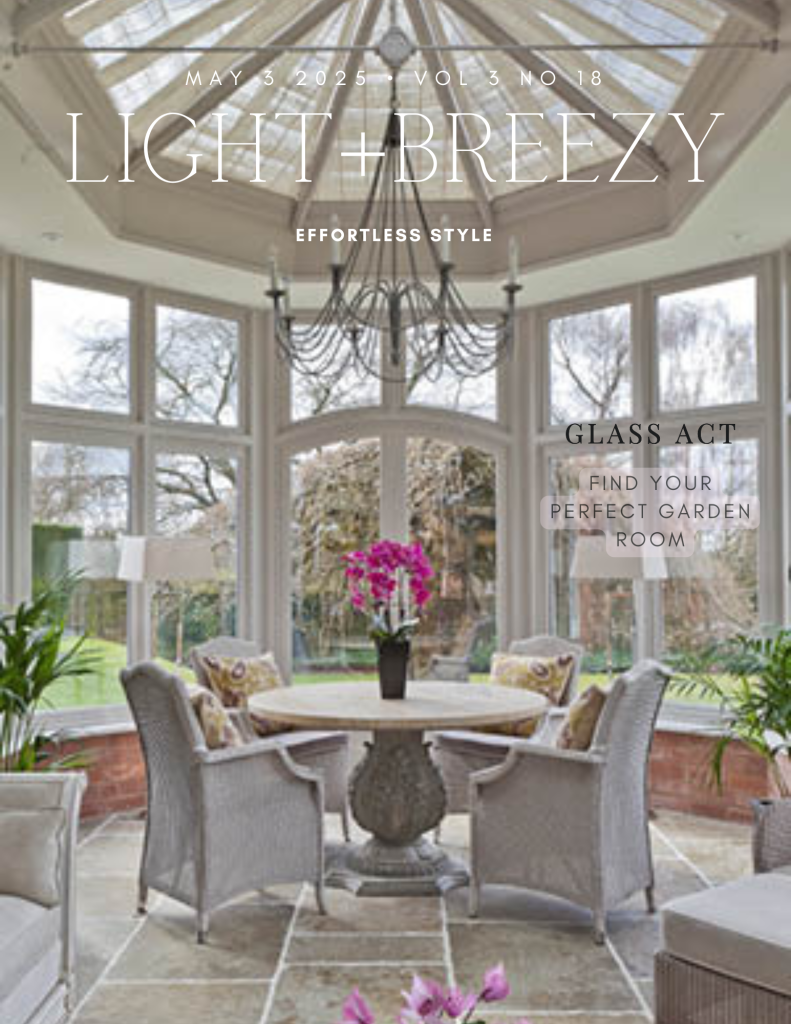
Bringing the Outdoors In: Choosing the Perfect Garden Room for Your Lifestyle
In an age where our connection to nature feels increasingly precious, garden rooms have emerged as sanctuaries that blur the boundary between home and garden. Whether you’re dreaming of a sun-drenched breakfast nook, a tropical haven for exotic plants, or a year-round retreat that captures the essence of the outdoors, understanding the nuances between conservatories, greenhouses, and sunrooms is essential for creating a space that truly enhances your lifestyle.
Garden Room Glossary: Understanding the Differences
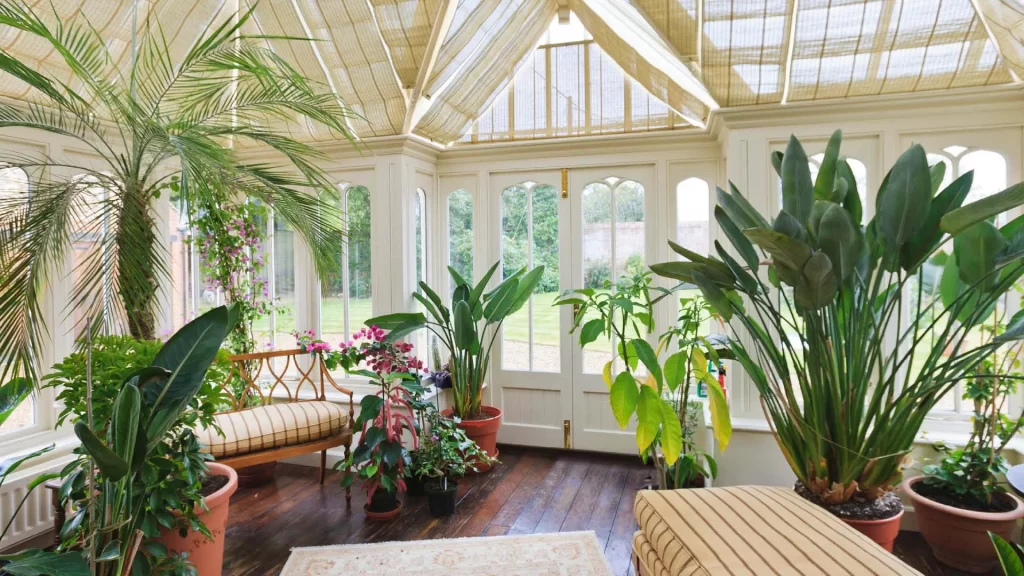
Before diving into specific styles, let’s clarify what distinguishes each type of garden room:
Garden Room: A broad term encompassing any structure that extends living space with a strong connection to the garden. Modern garden rooms often feature more solid construction than glass alternatives, sometimes with contemporary materials like composite cladding and large sliding doors. They typically serve as multi-purpose spaces that function as extensions of the home rather than primarily for plants.
Conservatory: Architecturally ornate structures with extensive glazing on walls and roofs, traditionally featuring decorative elements like finials, cresting, and intricate framework. Originally designed to display status and house exotic plant collections, today’s conservatories blend historical character with living space functionality.
Greenhouse: Purpose-built for plant cultivation with maximized light exposure, optimized ventilation, and features that prioritize growing conditions over human comfort. Greenhouses focus on creating controlled environments for plants rather than serving as primary living spaces.
Sunroom: More solidly constructed than conservatories with conventional walls, large windows, and often specialized glass that regulates temperature. Sunrooms prioritize year-round comfort and versatility, serving as true living space extensions with better insulation and climate control.
Orangery: Historically developed to protect citrus trees in winter, orangeries represent an architectural middle ground between a conservatory and a traditional room addition. They feature solid wall sections with large windows, a perimeter roof with a central glazed lantern, and often substantial masonry or brick pillars. Their partial solid roof construction makes them more temperature-stable than conservatories while maintaining an elegant, classical appearance.
The Classic Conservatory: Victorian Elegance Meets Modern Living
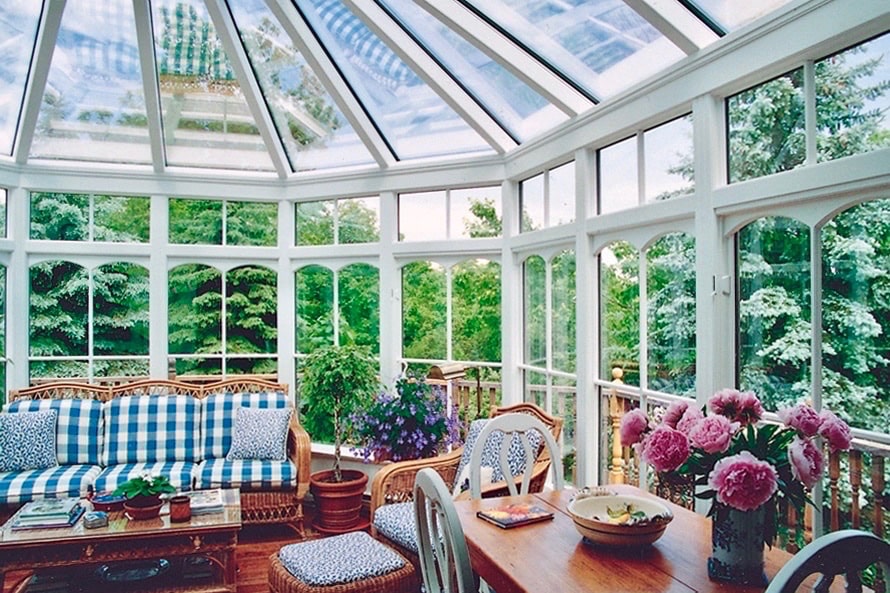
Conservatories originated in the 16th century when wealthy European estate owners sought spaces to protect their citrus collections during harsh winters. Today’s conservatories maintain that air of sophistication while serving as versatile living areas.
Distinguished by their glass walls and roofs supported by ornate frameworks (traditionally wood, now often aluminum or uPVC), conservatories feature architectural details that give them a distinctly classic character. The pitched glass roof, often adorned with finials and cresting, creates a dramatic play of light throughout the day.
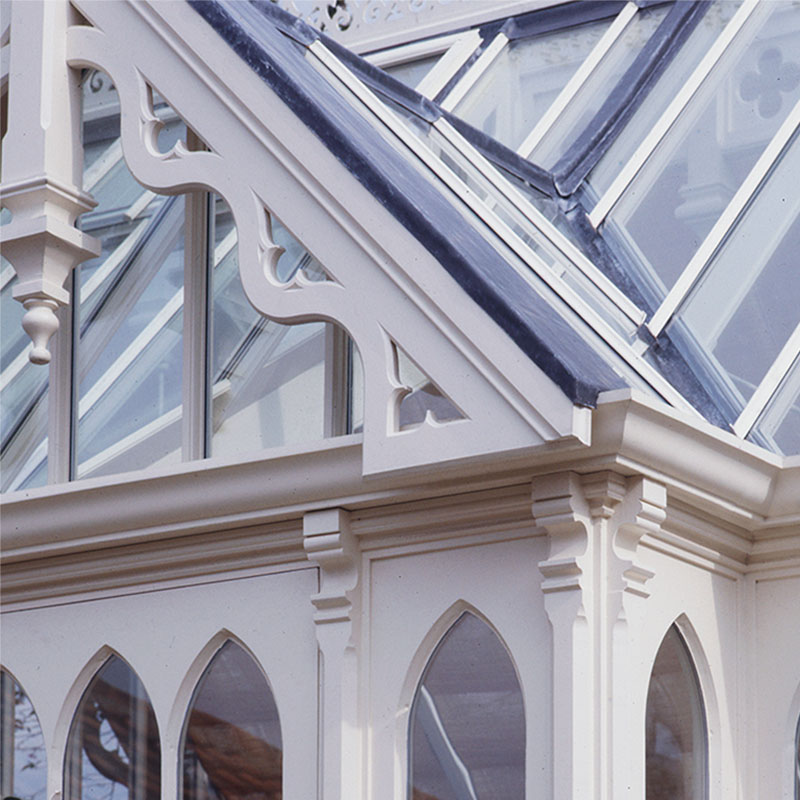
“A conservatory isn’t just an addition—it’s a statement,” says interior designer Olivia Baker. “It speaks to a lifestyle that values heritage, elegance, and a formal connection to the garden.”
Perfect for: Those who appreciate architectural character and want a polished space primarily for living rather than serious gardening. Conservatories excel as sophisticated dining areas, reading rooms, or elegant entertaining spaces.
Lifestyle considerations:
- Temperature regulation can be challenging—conservatories tend to capture heat in summer and lose it in winter
- The ornate construction requires thoughtful maintenance
- They offer the most seamless aesthetic connection to traditional architecture
- They provide a formal, elegant setting for entertaining guests
The Practical Greenhouse: A Plant Enthusiast’s Laboratory

While conservatories prioritize human comfort, greenhouses are unapologetically plant-focused environments designed to optimize growing conditions. With their utilitarian frames and maximized glass exposure, greenhouses create microclimates that can extend growing seasons and nurture plants that might otherwise struggle in your local climate.
Modern greenhouses range from charming freestanding structures to lean-to designs that attach directly to your home. Technical innovations like automated venting, misting systems, and specialized growing lights have elevated the humble greenhouse into a high-performance growing environment.
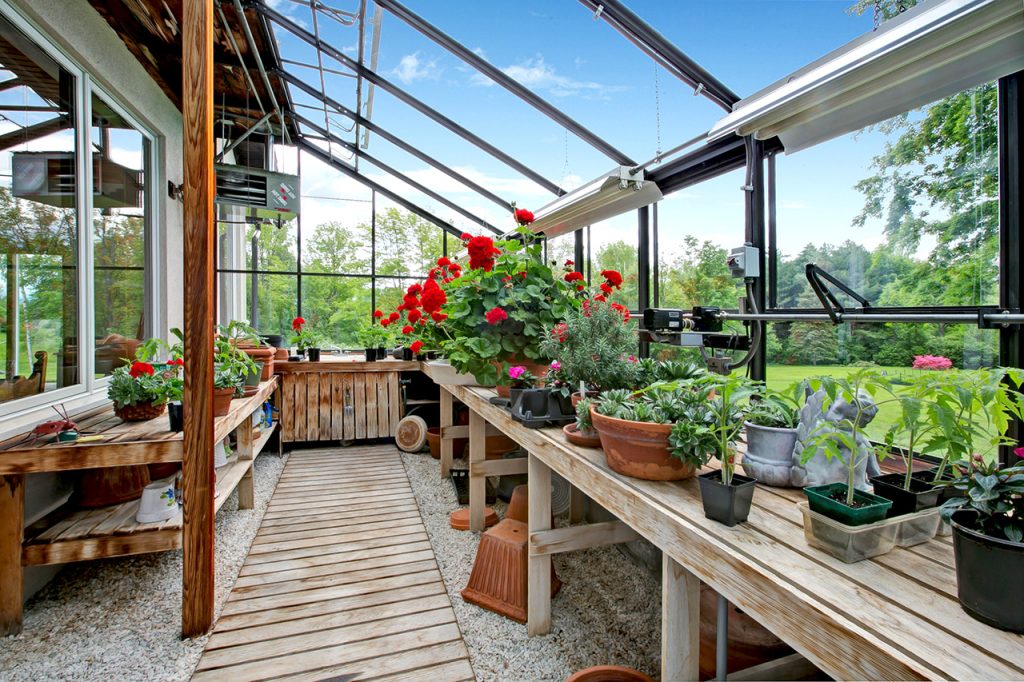
Perfect for: The passionate gardener, the experimental botanical enthusiast, or anyone looking to boost self-sufficiency through year-round growing. Greenhouses shine as productive spaces for serious plant cultivation.
Lifestyle considerations:
- Prioritizes plant needs over human comfort
- Offers the joy of extending growing seasons and experimenting with exotic varieties
- Creates opportunities for sustainable living through food production
- Requires consistent attention to ventilation, humidity, and temperature
- Tends to have a more utilitarian appearance that may require thoughtful integration with your home’s aesthetic
The Versatile Sunroom: Casual Comfort with a View
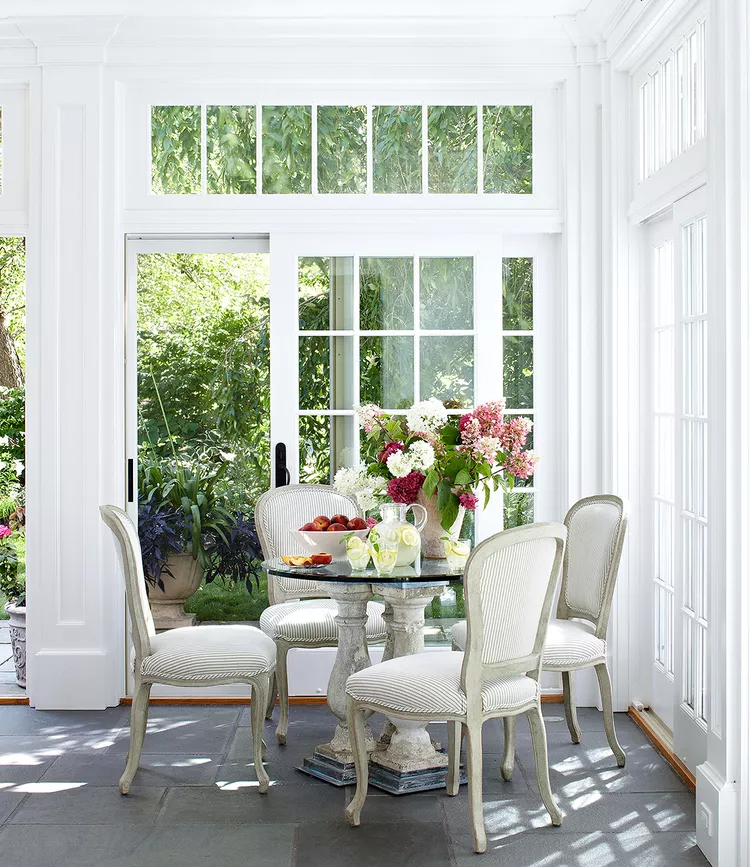
If conservatories represent formality and greenhouses represent function, sunrooms embody flexible, casual living. With more solid construction than their glass counterparts, sunrooms typically feature conventional framing with large windows and skylights rather than full glass enclosure.
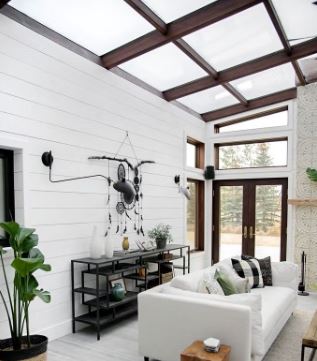
This architectural middle ground creates a space that’s more temperature-stable and energy-efficient while still delivering that coveted connection to outdoors. Modern sunrooms often incorporate insulated glass, radiant flooring, and climate control systems that make them truly four-season spaces.
“Sunrooms have evolved into the most livable garden room option,” explains architect James Foster. “They’re chameleons that adapt to virtually any lifestyle need while maintaining that essential connection to nature.”
Perfect for: Families seeking multi-purpose space, those in variable climates who want year-round enjoyment, or homeowners looking for the most adaptable garden room option. Sunrooms excel as casual living areas, breakfast nooks, or multi-functional spaces that serve changing family needs.
Lifestyle considerations:
- Offers the best temperature regulation for year-round comfort
- Provides flexibility to accommodate diverse activities from casual dining to home office space
- Typically the most energy-efficient option
- Features the lowest maintenance requirements
- Balances light and privacy better than fully glazed alternatives
Finding Your Perfect Match: Questions to Consider
Before deciding which garden room aligns with your lifestyle, consider these fundamental questions:
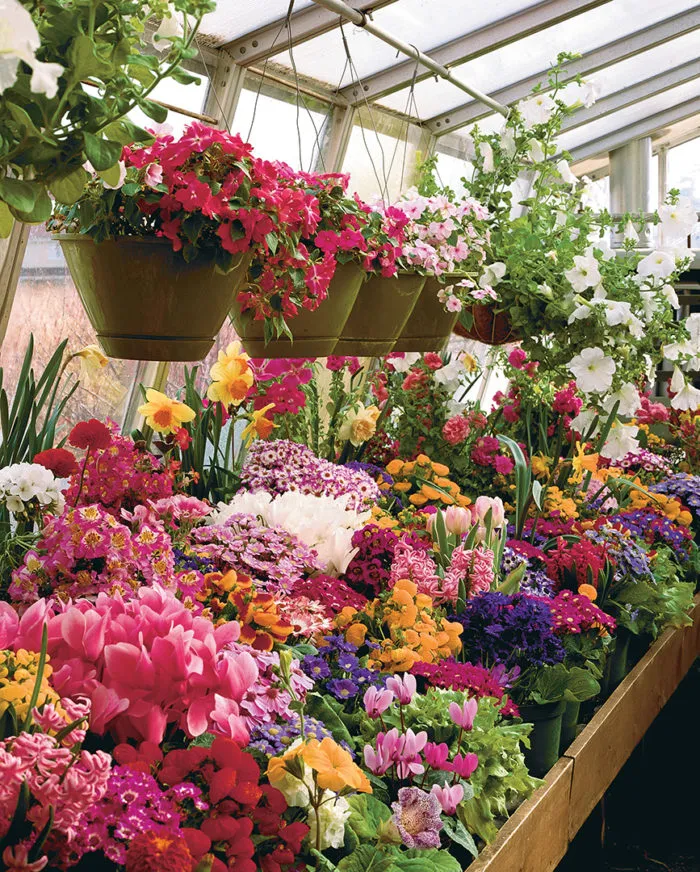
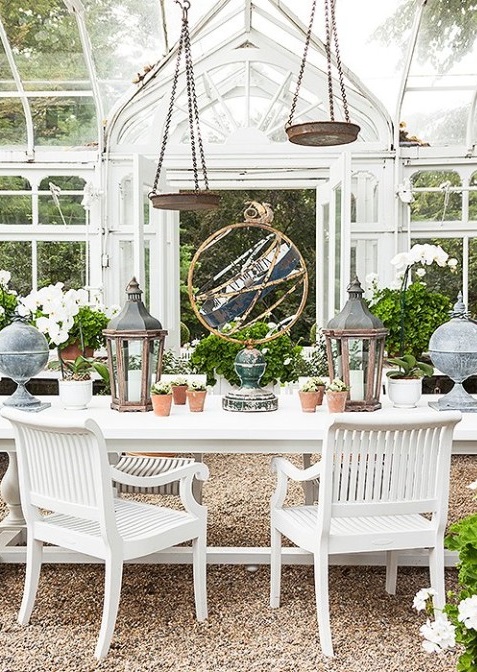

What’s your primary purpose? If you envision primarily growing plants, a greenhouse makes sense. For elegant entertaining, consider a conservatory. For versatile family living, a sunroom might be ideal.
What’s your climate reality? In extreme climates, sunrooms offer the most reliable comfort. In moderate climates, conservatories and greenhouses become more practical year-round spaces.
What’s your maintenance tolerance? Conservatories and greenhouses typically require more upkeep than the more conventional construction of sunrooms.
What’s your budget scope? Generally, custom conservatories represent the highest investment, while prefabricated greenhouses can be surprisingly affordable. Sunrooms typically fall between these extremes.
What’s your architectural context? Consider which style will complement your existing home. Period homes often pair beautifully with conservatories, while contemporary architecture might better suit the clean lines of a modern sunroom or greenhouse.
Hybrid Possibilities: When One Style Isn’t Enough
Today’s homeowners increasingly opt for hybrid spaces that borrow elements from different garden room traditions. Consider these innovative approaches:

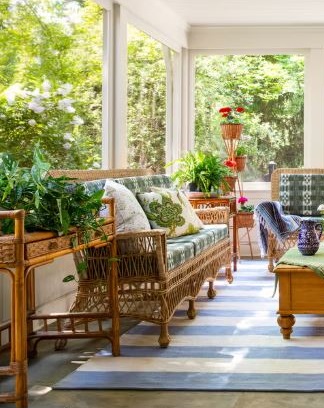
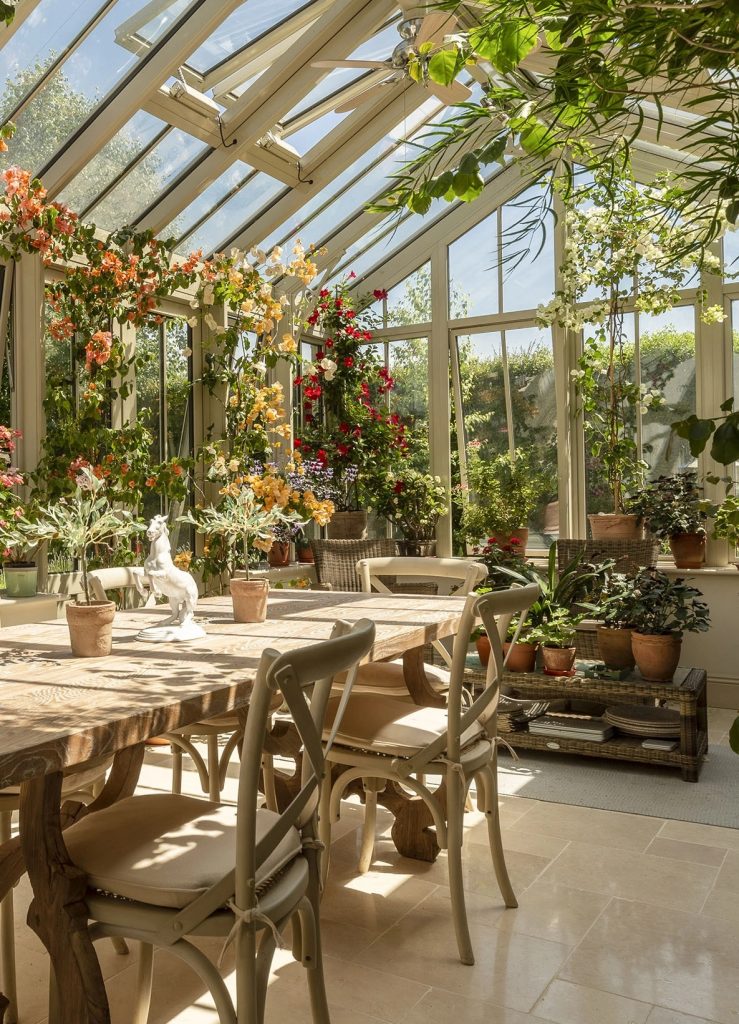
The Greenhouse-Conservatory: Combines ornate architectural details with practical growing features—perfect for those who want to showcase prized plant collections in an elegant setting.
The Sunroom-Greenhouse: Incorporates dedicated growing zones within a comfortable living space—ideal for those who want to nurture plants while maintaining everyday livability.
The Conservatory-Sunroom: Adopts the visual drama of conservatory architecture while incorporating the practical insulation and climate control of a sunroom—suited to those who want elegance without temperature extremes.
Making the Connection
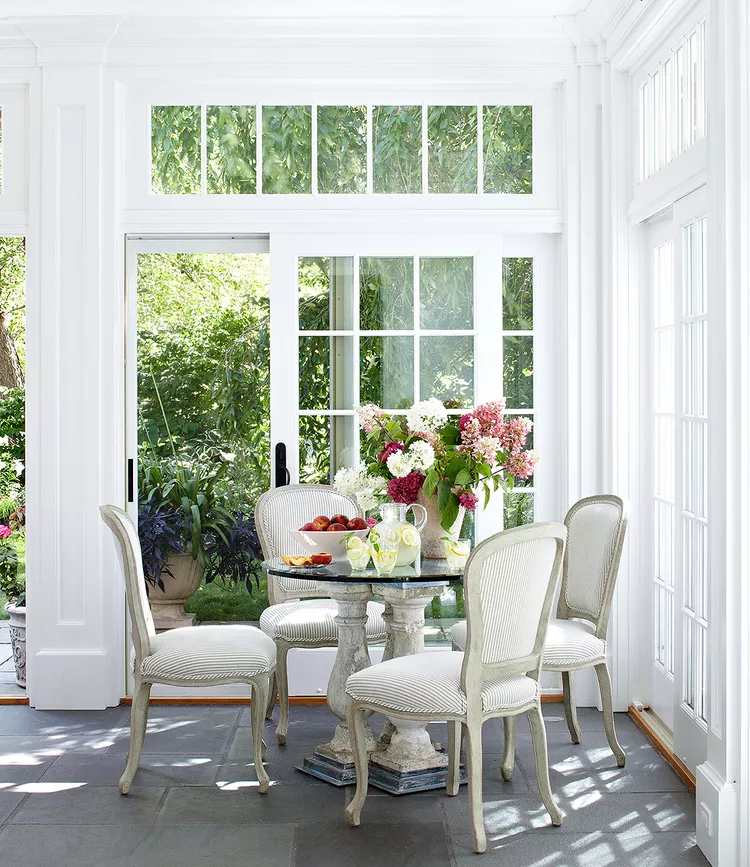
Regardless of which garden room style speaks to your lifestyle, consider how it will connect—both physically and visually—to your home and garden. The most successful garden rooms create seamless transitions, serving as bridges rather than afterthoughts.
Pay special attention to:
- Floor levels between existing spaces and your new garden room
- Door placements that encourage natural flow
- Sightlines from inside your home through the garden room to the landscape beyond
- Material transitions that create cohesion with existing architecture
A thoughtfully designed garden room doesn’t just add square footage—it enhances how you experience your entire home. By aligning your choice with your unique lifestyle priorities, you’ll create a space that brings joy through every season, making the boundary between indoors and outdoors beautifully meaningless.
